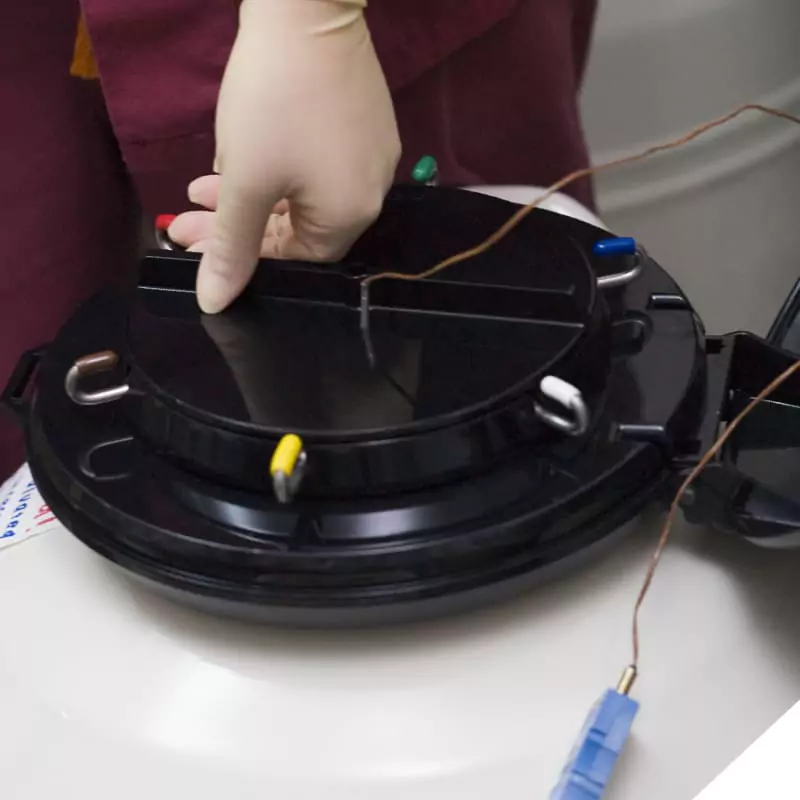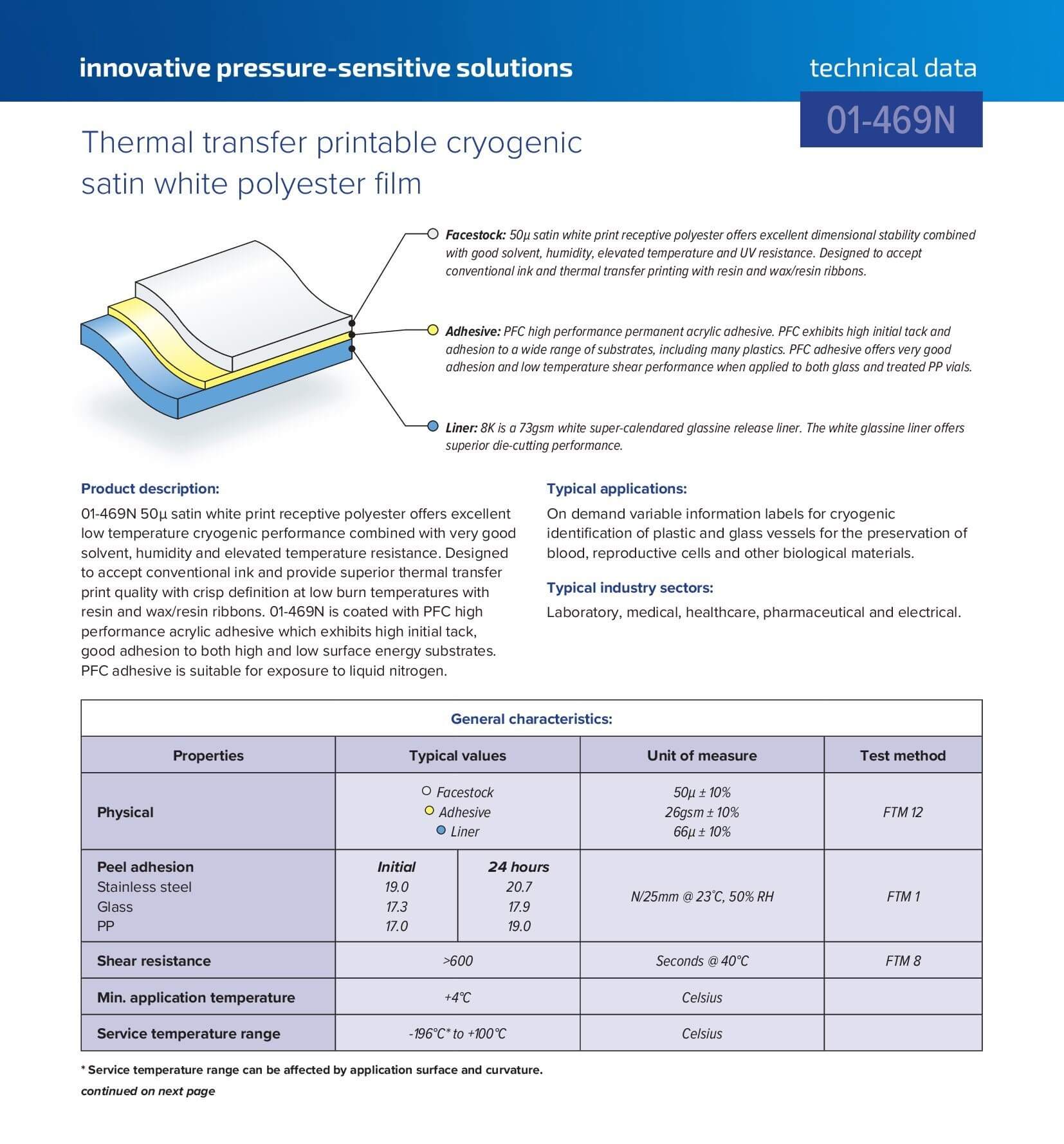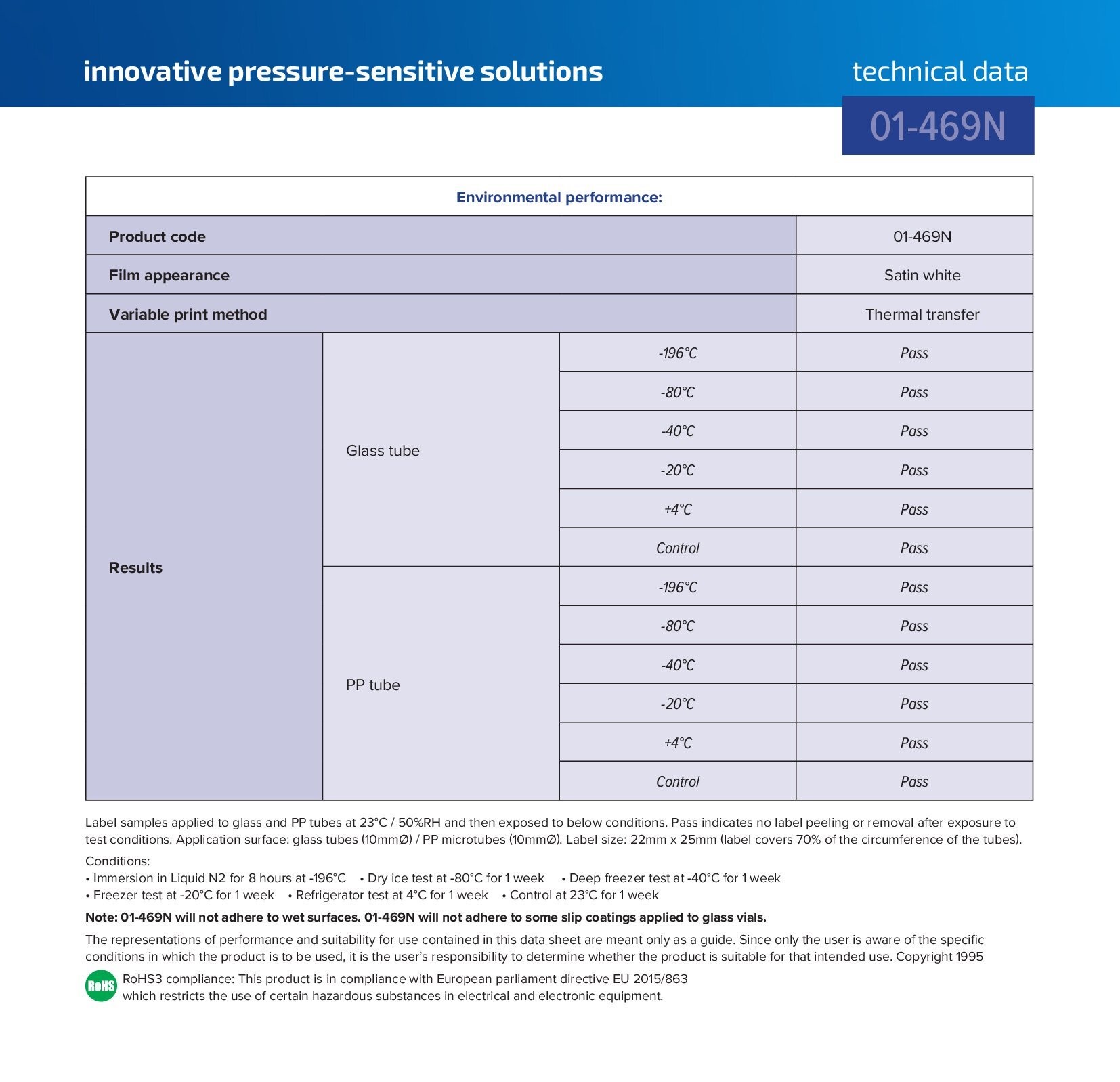Cryogenic labelstocks for temperatures down to -196°C
Our cryogenic labelstocks enable the reliable identification of plastic and glass vessels that undergo long-term storage in liquid nitrogen or deep-freezing. Printable via conventional inks, desktop laser, water-based ink-jet, and thermal transfer, they are ideal for use within clinical laboratories, biomedical research and other scientific environments
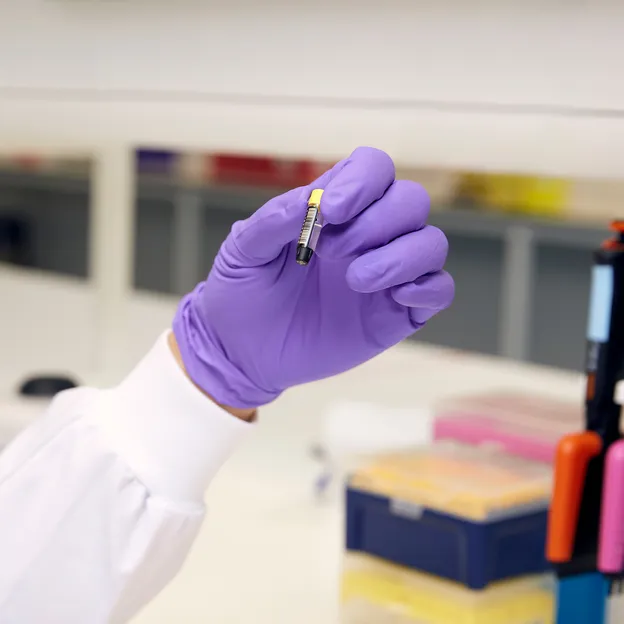
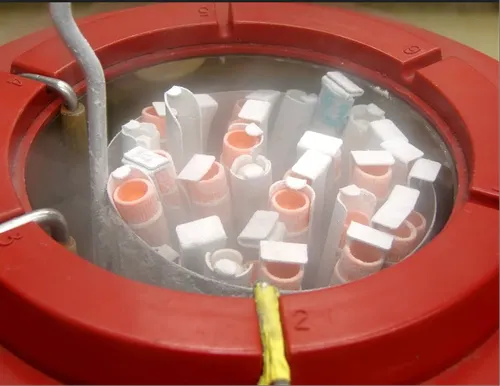
With a cohesive bond high enough to withstand thermal shock, the labelstocks can be directly immersed in liquid nitrogen at -196°C without risk of delamination. They can be variably printed via thermal transfer or laser, eliminating the use of marker pens for identification and so greatly reducing the risk of human error causing illegible marking or mislabeling. Users are also able to print the fine detail batch and barcodes required for small vials and test-tubes, ensuring all information is retained.
The properties of the products described here lend themselves to many other applications. Our technical team can adapt and innovate to create bespoke, solutions for specific needs – contact us to find out more.
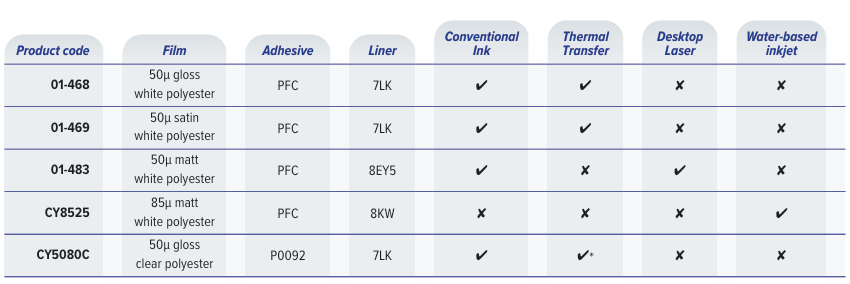
Environmental performance
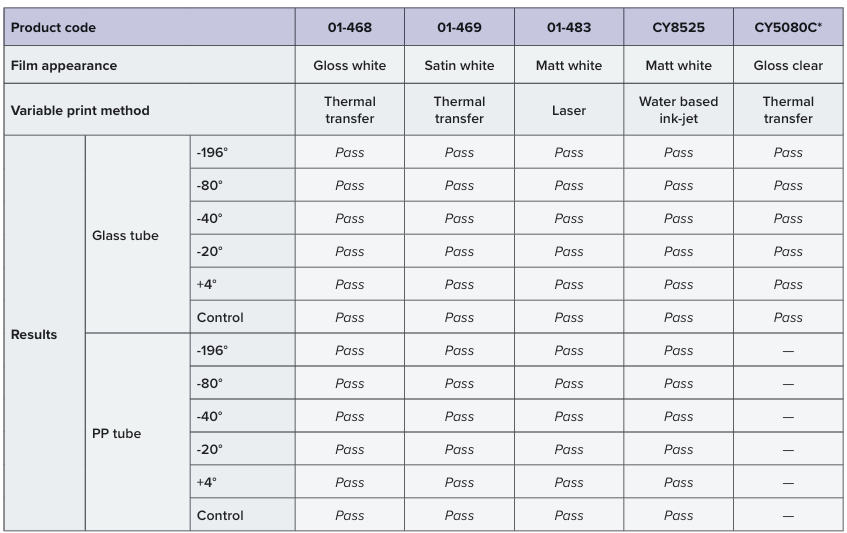
*Note: CY5080C is not recommended for PP surfaces.
Label samples applied to glass & PP tubes at 23°C / 50% RH and then exposed to below conditions. Pass indicates no label peeling or removal after exposure to test conditions. Application surface: glass tubes (10mmØ) / PP microtubes (10mmØ). Label size: 22mm x 25mm (label covers 70% of the circumference of the tubes)
Conditions:
- Immersion in Liquid N2 for 8Hrs at -196°C
- Dry ice simulation test at -80°C for 1 week
- Deep freezer simulating test at -40°C for 1 week
- Freezer simulating test at -20°C for 1 week
- Refrigerator simulating test at 4°C for 1 week
- Control at 23°C for 1 week
Note: FCL’s cryogenic label stocks will not adhere to wet surfaces and will not adhere to some slip coatings applied to glass vials. Full technical datasheets available on request.
The representations of performance and suitability for use contained in this data sheet are meant only as a guide. Since only the user is aware of the specific conditions in which the product is to be used, it is the user’s responsibility to determine whether the product is suitable for that intended use.
